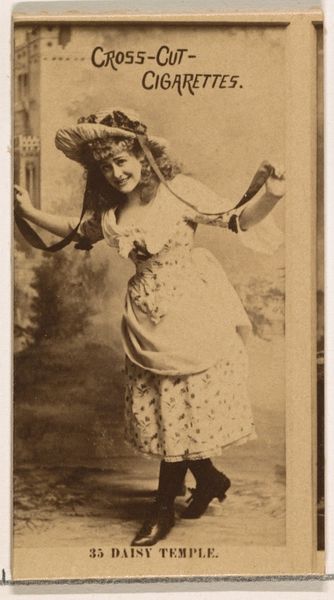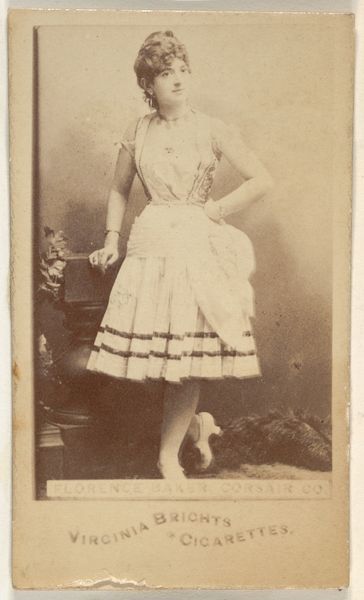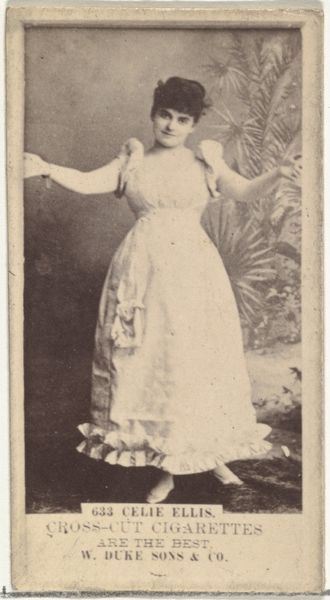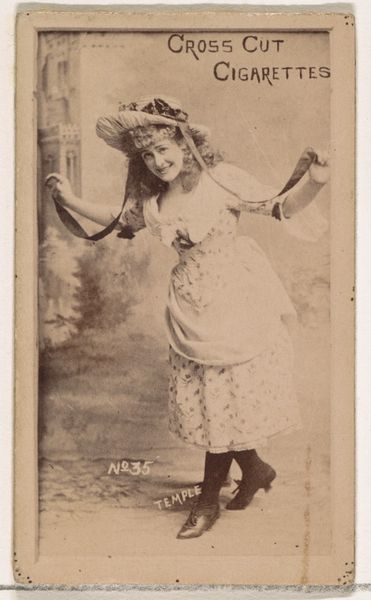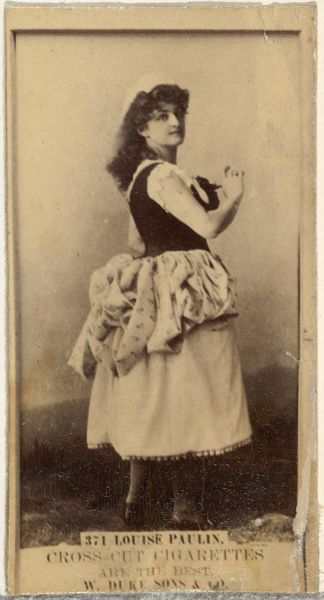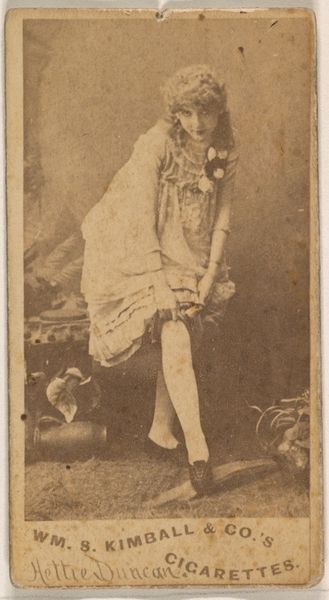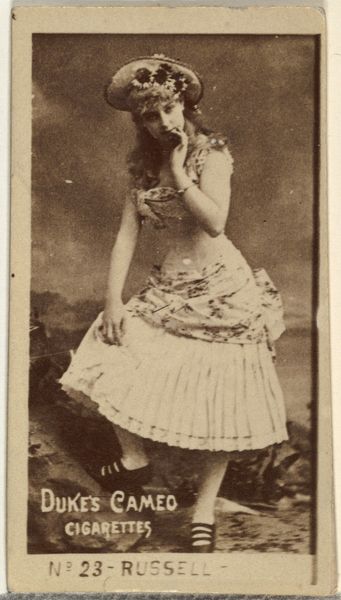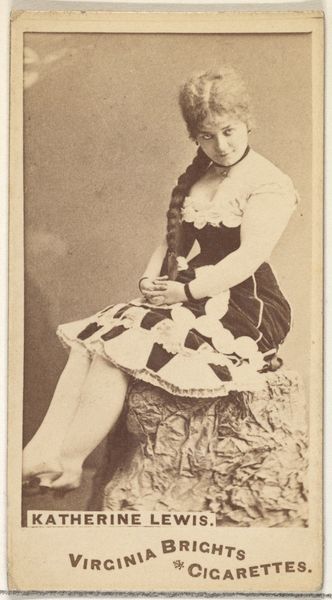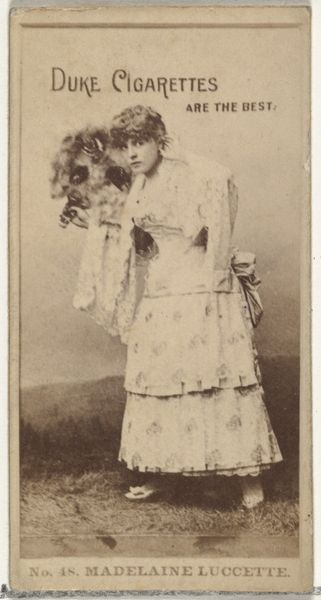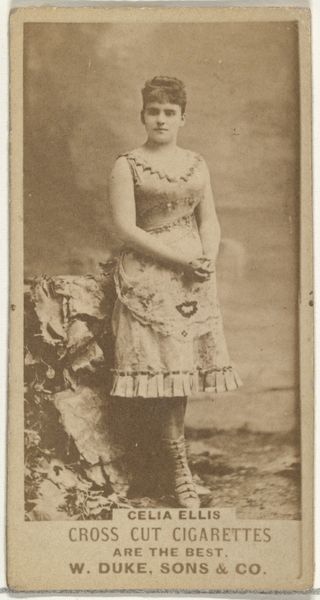
photography, albumen-print
#
portrait
#
aged paper
#
toned paper
#
muted colour palette
#
photo restoration
#
photography
#
historical fashion
#
19th century
#
albumen-print
Dimensions: height 144 mm, width 93 mm, height 166 mm, width 107 mm
Copyright: Rijks Museum: Open Domain
Curator: This striking image, identified as Julia Cuypers, is attributed to Carl Froehlich, dating circa 1860 to 1915. It’s an albumen print, a very common photographic process of the 19th century. Editor: My goodness, it's rather theatrical, isn’t it? She’s holding what looks like a dagger, but the composition and aged tone give it a distinct antique drama vibe. Curator: Yes, these albumen prints were commercial products; people would sit for studio portraits, much like we might take selfies today. They speak to a desire for representation, a burgeoning sense of self-awareness in the expanding middle class. Editor: Indeed. One has to wonder what the original context was meant to imply, though. Is this from a play? And to have these kinds of portraits, what were the conventions of display, you know? Where did such imagery fit into the visual culture and domestic space of its era? Curator: The albumen process itself is fascinating – egg whites coating the paper, making it receptive to the silver nitrate solution. It speaks volumes about the resources required and the labor involved in producing these images. You have the photographers themselves, and those processing and printing. And this warm, sepia tone, how much is aging, how much is intended... it's compelling. Editor: The photographer clearly positioned her, but I keep circling back to its broader function. How were photographic studios perceived? The studio operated almost as a stage in the city—influencing social mores regarding display of one's self in public and private contexts. Curator: The detail of her dress… you can practically feel the textures. These photos became material possessions, circulated amongst family and friends. The portrait offered a tangible link across time and distance, solidifying social bonds through a shared visual language. Editor: So, a commercial artifact meets aspirational visual storytelling! What started as a personal piece became, across time, something truly communal. Fascinating. Curator: It gives us an opportunity to think about labor, social class, material, how these things intertwine in creating art… or at least, creating images from this time. Editor: Absolutely. "Julia Cuypers" provides insight not only into individual identities, but into social practice—image consumption.
Comments
No comments
Be the first to comment and join the conversation on the ultimate creative platform.
